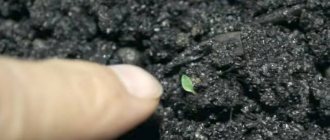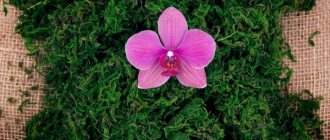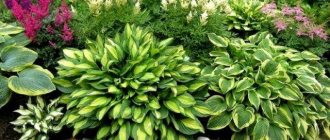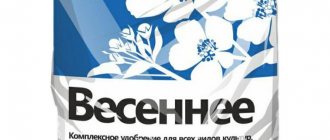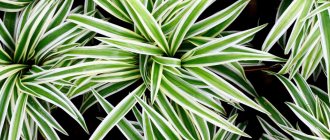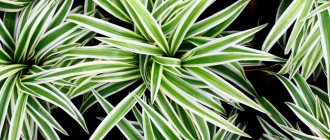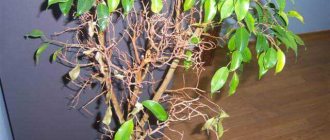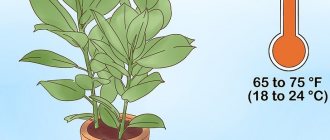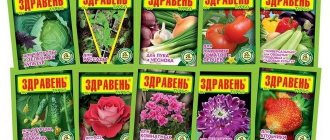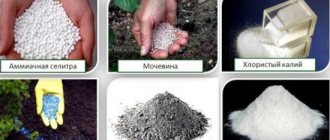Experienced gardeners often recommend using banana peels as fertilizer and using them both separately and as a potassium component for seedlings of crops and flowers. There are several simple recipes for making fertilizer based on banana skins, each of which has been tested over years of growing plants. What many consider to be garbage and throw in a bin, helps seedlings to grow like pies by leaps and bounds, because... The peel of the exotic delicacy contains all the substances important for plant development. By fertilizing seedlings with banana shells, you can significantly increase the quality and quantity of flowers and yield.
Benefits of Banana Peel Fertilizer
Experienced gardeners know that fruit is a real storehouse of micro- and macroelements that are beneficial for plants.
- The dried peel of a ripe banana contains more than 12% minerals. Moreover, the majority – 10% – is potassium. The remaining 2% is magnesium and calcium. In addition, banana peels contain 2% sulfur and some phosphorus. Therefore, there is no point in arguing about the effectiveness of using banana waste as a top dressing - it is useful.
- Banana fertilizers speed up the process of leaf and bud formation.
- Thanks to the high potassium content, they promote winter hardiness of plants.
- In addition, the aroma and shelf life of fruits and vegetables can be significantly increased by fertilizing during the growing season with various infusions based on banana peels.
- Banana fertilizers are especially effective for vegetable plants with a high need for potassium. And not only for tomatoes, potatoes and parsnips, but also for cucumbers, carrots and even pumpkins.
How to water flowers correctly
First, find out the degree of soil moisture. So, watering banana peel infusion will bring maximum benefits. Despite a considerable number of recommendations for proper watering, there is no universal method.
To properly use banana peel infusion for watering, you should follow the basic rules:
- for desert type cacti and succulents, watering should be moderate in the summer, when the plants are actively growing;
- you need to provide sufficient space for watering so that the compost is 10-20 mm below the level of the edge of the pot;
- for plants that require moderate watering, it is necessary to saturate them with moisture in the summer, much less in winter, and allow the outer layer of compost to dry out between all waterings;
- most flowering plants require constant moisture support, and the compost should not always be wet - for this you should wait until the top layer of compost dries;
- few species (azalea, cyperus) need wet compost; an infusion of banana skins is often used for abundant watering.
Harmful effects of banana peel fertilizer
But there is also a dark side. Firstly, one cannot ignore the consequences of chemical decomposition processes for indoor plants. The fact is that bacteria caused by rotting can have a negative impact on the development of the root system. For example, root rot damage in 70% of 100% leads to the death of the plant.
Secondly, we must not forget that the skin of industrially grown fruits and vegetables absorbs a huge amount of chemicals used to treat the plantation. The consequences of introducing such peels into the ground are unpredictable. For example, targeted chemical fungicides suppress not only pathogens, but also vegetation processes. This is especially noticeable during the budding phase of flowering plants. The number and size of buds may be significantly smaller than usual. Therefore, for infusions and mixtures, it is better to use eco-products purchased in a specialty store or grown at home (you can find out how to grow a banana at home from our article).
Using a decoction
If you need to get a useful product for watering indoor plants as quickly as possible, you can prepare a banana decoction.
Compound
- banana peel - 3 pcs.;
- purified water – 1 l.
Preparation
- Place the peel into the bowl after the water has boiled.
- Keep on low heat for 8-10 minutes.
- Cool, strain.
After complete cooling, the banana peel decoction can immediately be used for watering indoor plants, similar to the infusion.
Banana peel infusion
The safest way is to prepare an infusion based on dried peels. In addition to the fact that some of the chemicals are removed in this way, dried bananas can be used throughout the year. Just do not store the workpiece in closed glass jars. To prevent mold from appearing, it is better to store fertilizer in paper envelopes.
- Cut the raw materials into small pieces.
- Lay out on paper and put in a cool, dark place until completely dry. Of course, you can finish banana peels in the oven.
- Boil 100 grams of raw material in a liter of water. Let the broth brew for 12 hours.
- How to use: strain the resulting mixture and dilute with water at room temperature in a ratio of 1:5.
Cooking methods
Pre-processed banana peels should not be used raw. To make them a top dressing that will not burn the roots of cultivated plants, further processing of raw materials will be required. There are several recipes for how to preserve the mineral composition of banana peels, but reduce their concentration of biologically active components.
The raw materials
are dried at low temperature in a kitchen oven or fried until dry in a thick-walled frying pan - it is important to ensure that the skins do not burn.
An infusion is prepared
from the crusts by brewing with hot boiling water. The composition is closed and placed in a warm place for several hours.
The peel is dried in the sun or in an oven . The process is complicated by the fact that the crusts are quite thick, and if dried slowly, they can begin to rot or ferment before they have time to dry.
The raw materials are frozen for several days in the freezer or outside in winter. In this case, the harmful concentration of biocomponents is significantly reduced.
The recipe for scalding is to pour boiling water over the crusts and let them stand. After just a couple of hours, they turn into a mushy substance that can be used as a growth stimulator for plants.
drying
process is carried out outdoors under the sun's rays, which allows you to preserve the valuable components of the raw material unchanged.
After carrying out simple preparatory procedures, the raw materials are ready for use. When used correctly, such a product can increase the supply of organic matter and beneficial bacteria in the soil, which will cause rapid growth and development of plants.
Such preparations are a cheap and effective way of feeding.
The next important task facing a gardener is to know how to use it correctly.
Banana peels for large leaf plants
In order to fertilize large-leafed ornamental plants, it is enough to wipe the leaf blades with freshly peeled banana peels twice a week. It is better to do this after sunset. The rest of the time there is a risk of getting burned by the leaves or a chemical reaction negative for the plant.
In this way, you can not only nourish the flower with the necessary substances, but also add shine to the leaf blade. In addition, the pulp will protect the surface of the leaf from dust and excess moisture for some time.
Drip irrigation scheme
For plants that need constant moisture support, there is drip irrigation. Even in the absence of the owner of the house, the flowers receive the necessary nourishment. To do this you need:
- Install droppers specially purchased for drip irrigation or make them from improvised means (plastic bottles, hoses, etc.) with your own hands.
- Provide water supply by filling a bottle or other container.
- Holes made in the cap of an inverted plastic bottle will ensure a constant supply of moisture for the compost.
- If necessary, pour in the infusion of banana skins.
Application into the soil
If you are sure that unwanted chemicals will not get into the soil of your garden along with banana peels, apply fertilizer 2 times a week. Of course, for each individual plant there are individual proportions. The universal dose is 100 grams per root.
In order for the peel to quickly decompose in the soil, be sure to grind the raw materials before applying. It is better to dig in the root zone at a distance of at least 5 cm from the trunk. The approximate depth is 10 cm. This should be done as carefully as possible so as not to damage the root ball.
Preparation of raw materials
Exotic fruits must be thoroughly washed before consumption. Banana peels may contain various pathogenic microorganisms and bacteria, insect larvae, traces of various fertilizers and chemicals with which the fruits were treated during their cultivation. Tropical plants should be treated with increased attention and caution. Bananas are cut unripe and then treated with ethylene compounds. In addition, during the life cycle of plant growth, plants are regularly treated with pesticides. Unripe bananas release milky juice when cut.
To ensure that the fruits become marketable, the juice is removed using chlorine and ammonium sulfate. These substances saturate the peel and accumulate in it, which is dangerous to human and plant health.
In order to obtain a safe organic fertilizer, banana skins must be thoroughly cleaned of any remaining pulp fibers and veins. The raw materials from which the fertilizer will be made must be washed in soapy water and dried. At the same time, all chemical components and organic matter will be preserved and will not lose their valuable properties.
Banana peel compost mixture
The compost mixture recipe is considered one of the most effective home recipes. But you should remember the danger of overdose. Here, as in all other cases, individual recommendations are important. For example, banana compost gives excellent results when transplanting roses. But it is not only completely useless, but also harmful to flowers that “don’t like” potassium. Another disadvantage is the characteristic, rather unpleasant smell. Therefore, the preparation and use of compost is more appropriate for the vegetable garden and garden, in a private home. Recipe for making banana peel dressing:
- To prepare the fertilizer, mix chernozem (5 kg), banana peelings (10 pcs.) and the preparation for improving soil quality “Baikal EM-1 (50 g).
- Leave the mixture in a warm place for at least two weeks.
- After this time, repeat the procedure completely, adding the same amount of ingredients to the compost container.
The fermentation process depends on the quality of the raw materials. Fermentation can last more than a month. Before application, the mixture is diluted with earth at the rate of 1:4.
When is the best time to use fertilizer?
When planning to use banana peels as fertilizer for indoor plants and gardens, follow the recommended timing and methods of application.
The fertilizer can be used as powder, liquid, pieces and compost. The choice depends on the amount of raw materials, personal preferences and the processing location (indoors or outdoors). Thus, fresh skins are used during transplantation or planting of seedlings. The solution is sprayed and watered on the crops, and the seeds are prepared for germination. In the form of dry crusts, powder and compost, the skins are good for mulching the soil.
What plants benefit from banana peel fertilizers?
Banana fertilizer is suitable for both flowers and vegetable crops. But, first of all, these are plants with a high need for potassium. For example,
- for roses – potassium will strengthen the immune system; increasing frost resistance, it will make wintering easier; protects against pests;
- for orchids – will increase the number of buds and the duration of flowering;
- for geranium and fuchsia - phosphorus in banana fertilizer helps to increase the number of buds and the size of flowers.
Also, fertilizing with banana peels has a good effect on the formation of fruits and vegetables. List of items requiring potassium and phosphorus:
- eggplants,
- bell pepper,
- cabbage,
- carrot,
- cucumbers,
- beets, etc.
Precautionary measures
Before using tropical fertilizer in your garden, read the following warnings:
- The peel is a kind of “biofilter” of bananas. These smart plants do not accumulate foreign substances in the pulp.
- Banana peel is not a universal fertilizer that can replace all fertilizers. It is a source of only potassium, phosphorus and calcium. But plants also need nitrogen, of which there is a small amount in bananas.
- If you have accumulated fruit peels from suppliers whose integrity you are not sure of, do not throw them away. This peel is suitable for fertilizing tomatoes, eggplants, and sunflowers. These crops, like bananas, also have “biofilters” that prevent the accumulation of harmful substances in the pulp.
- Fertilizing with fresh banana skins is more recommended for seedlings and young plants. To fertilize plantings that are at the stage of flowering and fruiting, it is better to use dried, fried, dried skins
- It is recommended to place raw peels under seeds and the root system of seedlings, but not under adult plants. You shouldn’t mulch the soil with banana peels either.
- Leaving raw peels on the soil surface is a big mistake. It will not release useful substances to the substrate, but will begin to mold. Such a decomposing product will attract uninvited sweet lovers - ants, fruit flies and others.
- You can prepare banana fertilizer in a lot of ways - fry it in the oven, microwave oven, dry it on a radiator, window sill, freeze it in the freezer, brew it like tea and scald it with boiling water. But the best way is drying in the fresh air. With this approach, most of the useful components and growth stimulants will remain in the raw materials, and unnecessary (or even harmful) organic matter will evaporate. I cut the skins into thin long strips 1-2 cm wide, tie them by the tails, like mushrooms, and hang them on the sunny open veranda. I start making preparations in the spring - for drying, a temperature of 15 C is enough.
Wash the fruit skins very thoroughly before use - in hot water and soap. After all, when harvesting, bananas are soaked in vats with solutions of ammonium sulfate and chlorine to remove the milky juice.
It is also important not to “over-fertilize” the plants with banana treats. Let me present the norms for feeding:
- Greenhouse crops: ½ cup for tomatoes, ¼ cup for cucumbers.
- Ornamental plants: half a glass or a whole glass per bush. There is no need to feed more than once every 1-2 weeks.
- Indoor flowers: 1-2 tbsp. spoons of fertilizer per 2-3 liter pot. Fertilizer frequency: once a week.
Banana peel is an excellent and economical remedy for the garden, vegetable garden and home. Among the sea of its applications, one of the most valuable is fertilizing seedlings, indoor and greenhouse plants, and open ground plantings. Use fresh, dried, dried fertilizer, make banana decoctions, infusions and cocktails. The most important thing is not to forget about precautions when using such fertilizer.
